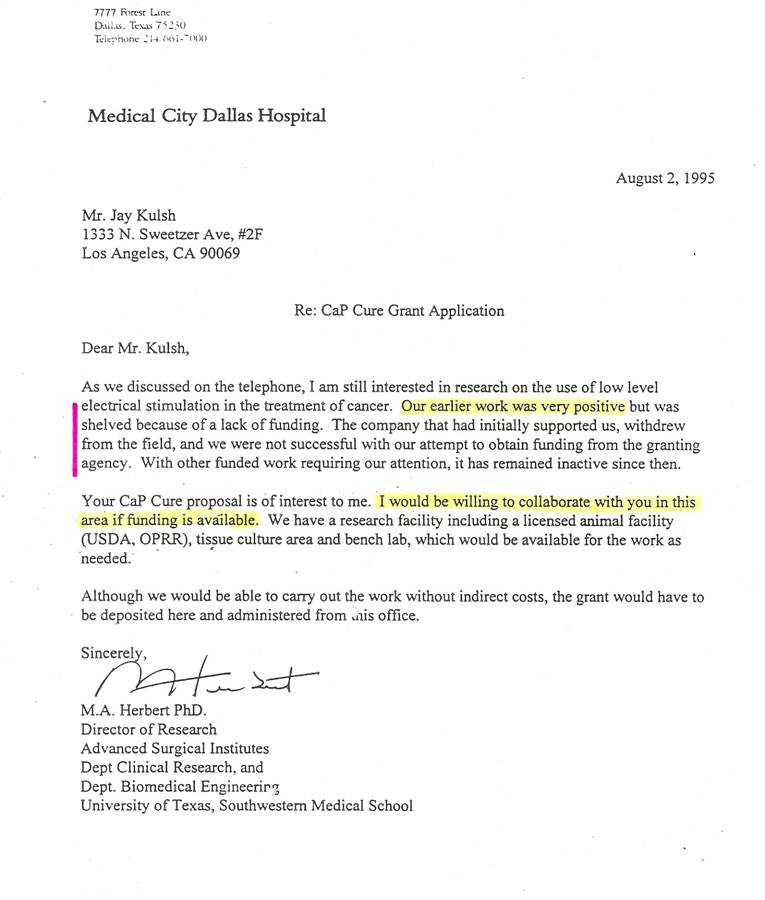|
Context:
The Cancer Electrotherapy Study published in 1985 in eminent journal Cancer Research reported outstanding
results. There was up to 98% shrinkage of tumor -- virtual cure -- after only 1 hour of treatment per day,
for 5 days.
The authors of the study were not able to come up with any plausible mechanism for such dramatic destruction
of tumors. However, they did rule out temperature or pH change -- or metal dissolution at the electrodes.
In 1995, I was able to locate the lead author Dr. M. A. Herbert to a medical school at the University of Texas.
I called him and spoke about the critical role enzyme Ribonucleotide Reductase (RnR) plays in cancer growth and
RnR's vulnerability to mild electric current due to the presence of free-radical at its active-site. Dr. Herbert
was intrigued and we kept talking for about an hour.
I also asked him why he did not do any follow-up study. He told me that grantors objected to the use of hamsters
(instead of more standard mice) as if that invalidated the published work. He found the objection silly, so did I.
Since I was in the process of writing a proposal to get a grant from CapCure program to study electrotherapy for
cancer, and needed a collaborator who had a lab, he agreed to be a partner in the proposal and sent the above
letter along with his Curriculum Vitae to me.
Our proposal to CaPCure foundation was declined. I also asked MD Anderson Cancer Center for a grant of $100,000,
citing their own letter; they did not send any formal response, only a hand-scribbled negative note by a secretary.
◉
|
